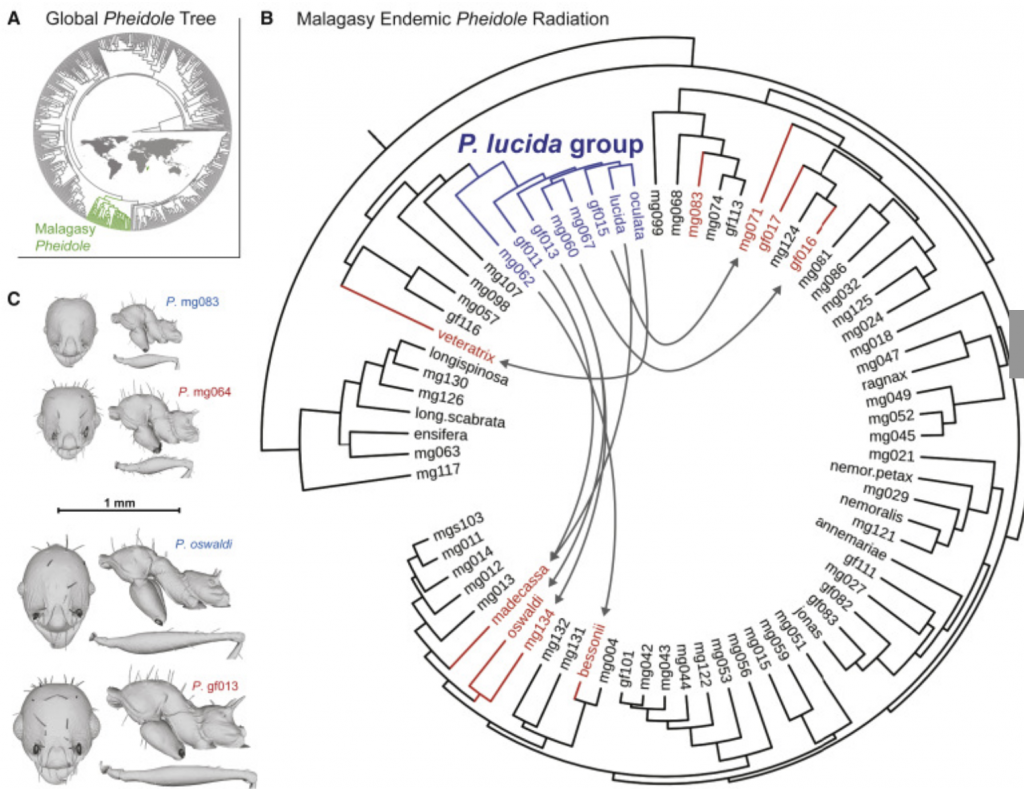If you look hard enough in the field, you are guaranteed to uncover cool stuff. Such is the case in Madagascar, where Brian Fisher and colleagues have been surveying the island intensively for 20+ years, uncovering a huge and mostly endemic ant fauna. Georg Fischer has been working for some years on the collections of Malagasy Pheidole, and, in the process found something very strange. There is an extremely rare, and unusual group of social parasites with workers that seem to look like their hosts. Working with Sasha Mikheyev’s lab and other colleagues, we found they belong to a single clade, a mini-radiation of parasites within the broader endemic Malagasy radiation, rather than (as is typical) each parasite being closely related to their host. Using micro-CT and a comparative analysis (led by Nick Friedman), we found they have evolved size and shape to match their hosts. Parasites more generally evolve to resemble their hosts because they aim to fool predators (Batesian mimicry) or they aim to fool the hosts themselves (Wasmannian mimicry). It is hard to invoke Batesian mimicry here, which leaves Wasmannian as the putative mechanism, and this is not known for ants that parasitize other ants (although is known for other insects like beetles to parasitize ants). If true, it implies ants may sense morphology to some degree to distinguish friend from foe, and these abilities are very sensitive. There are other potential explanations too, as we discuss in the paper, just out in Current Biology. This is definitely a study that raises as many questions as answers, hopefully it will inspire some follow up experiments.

